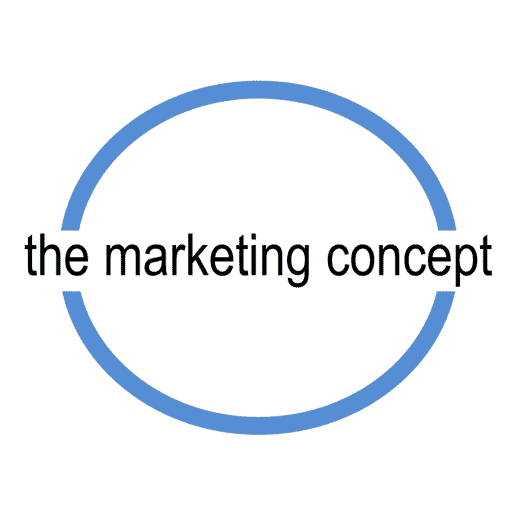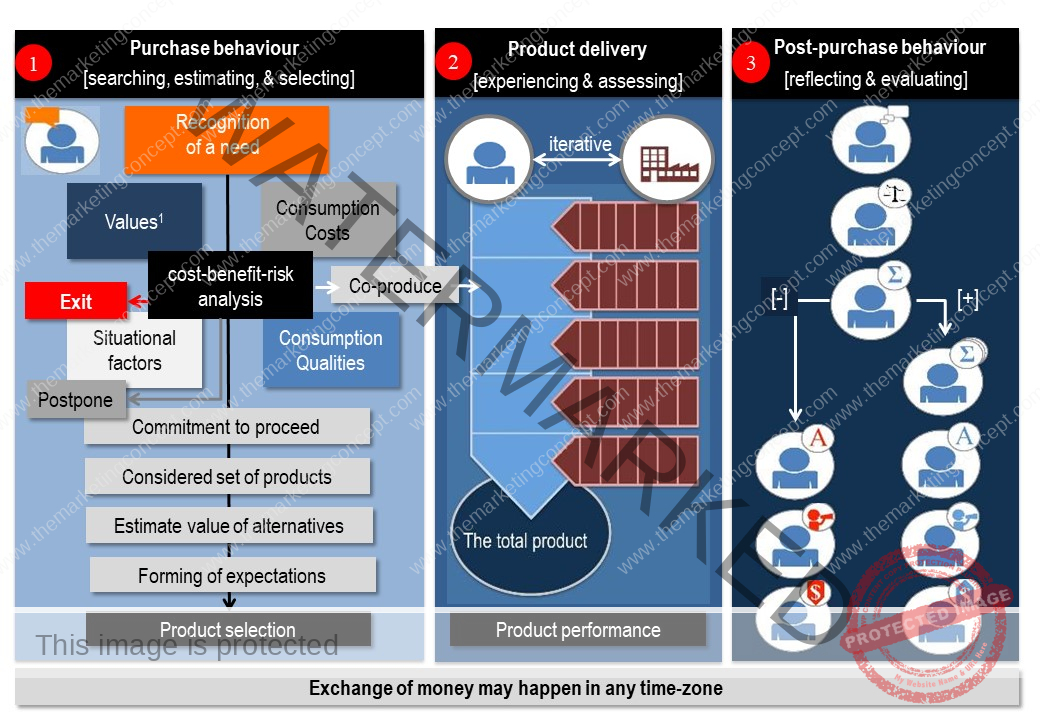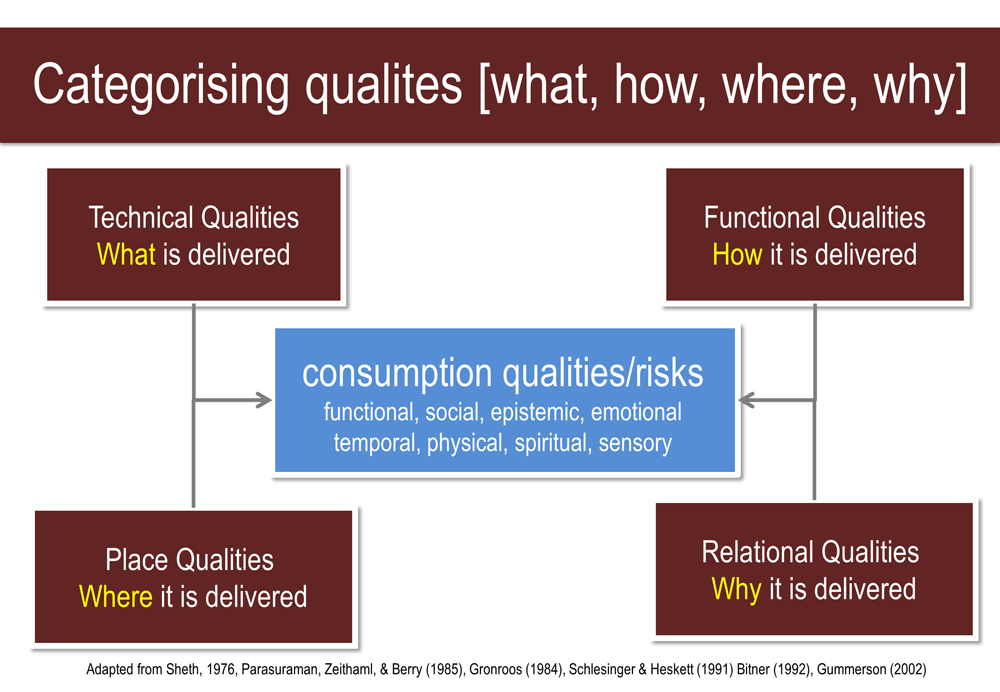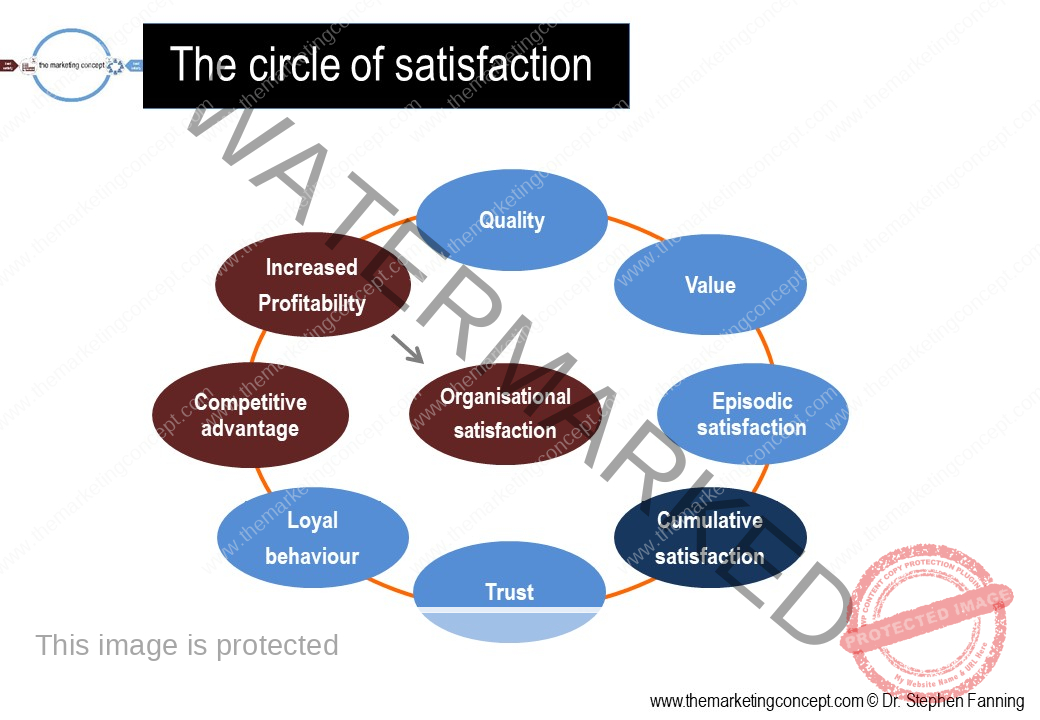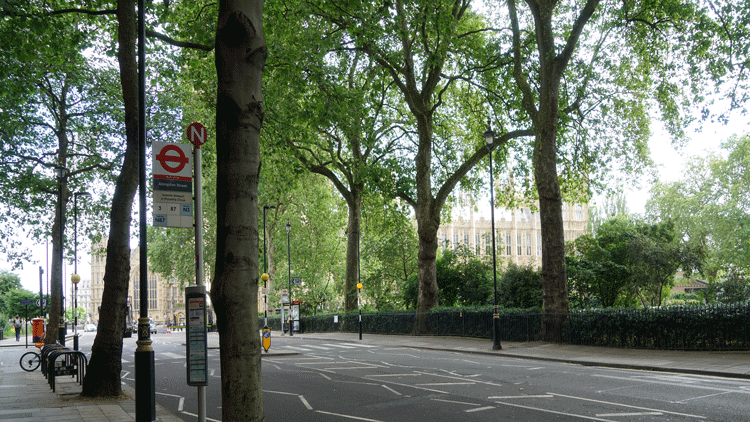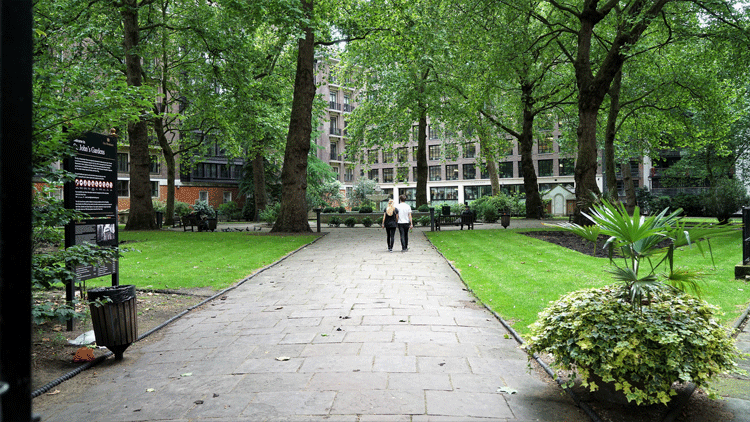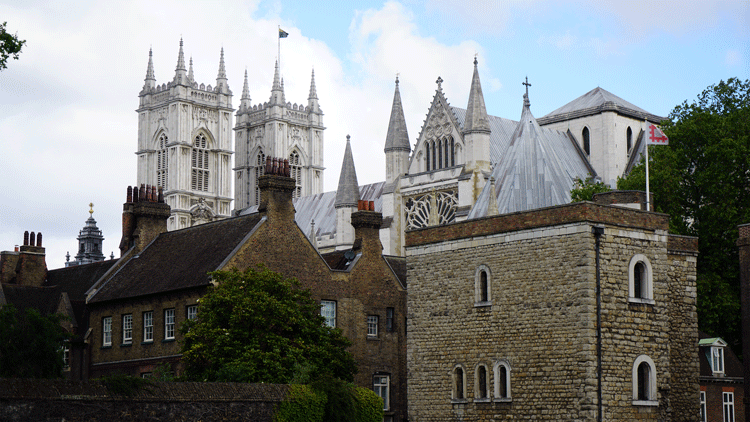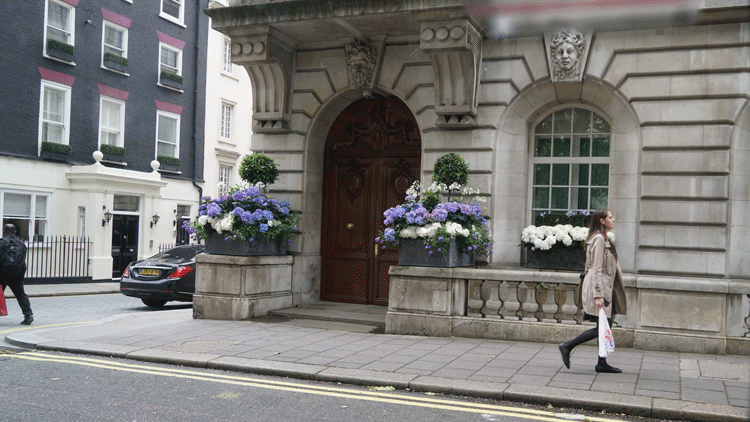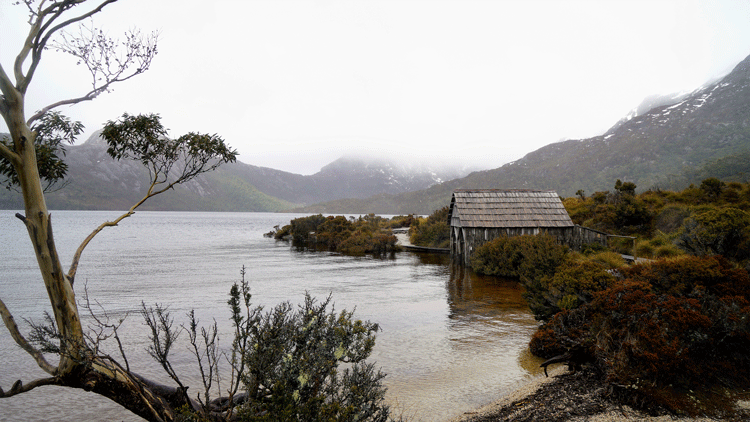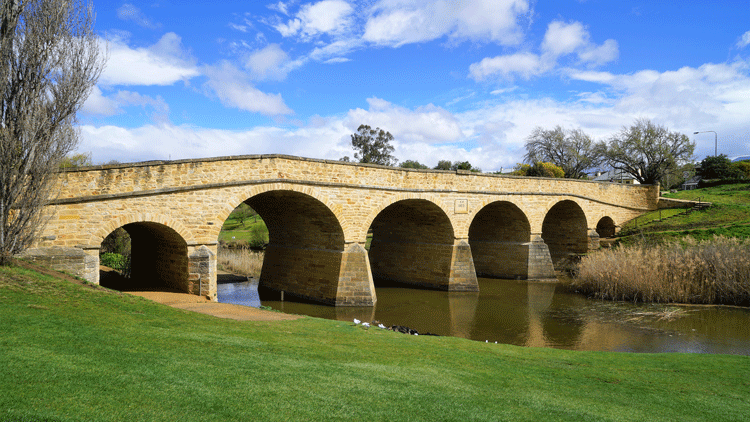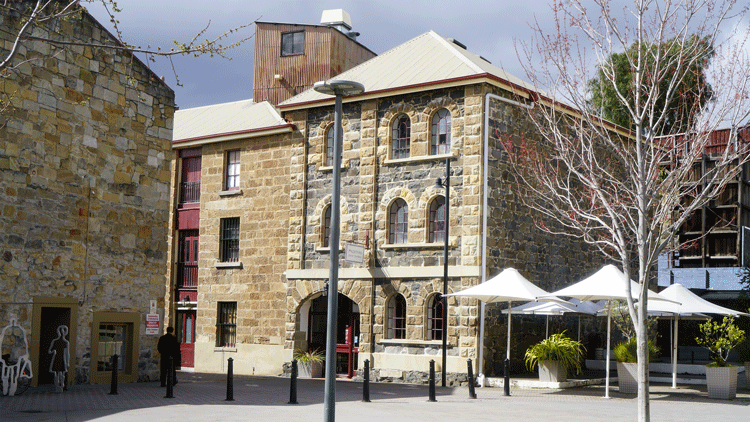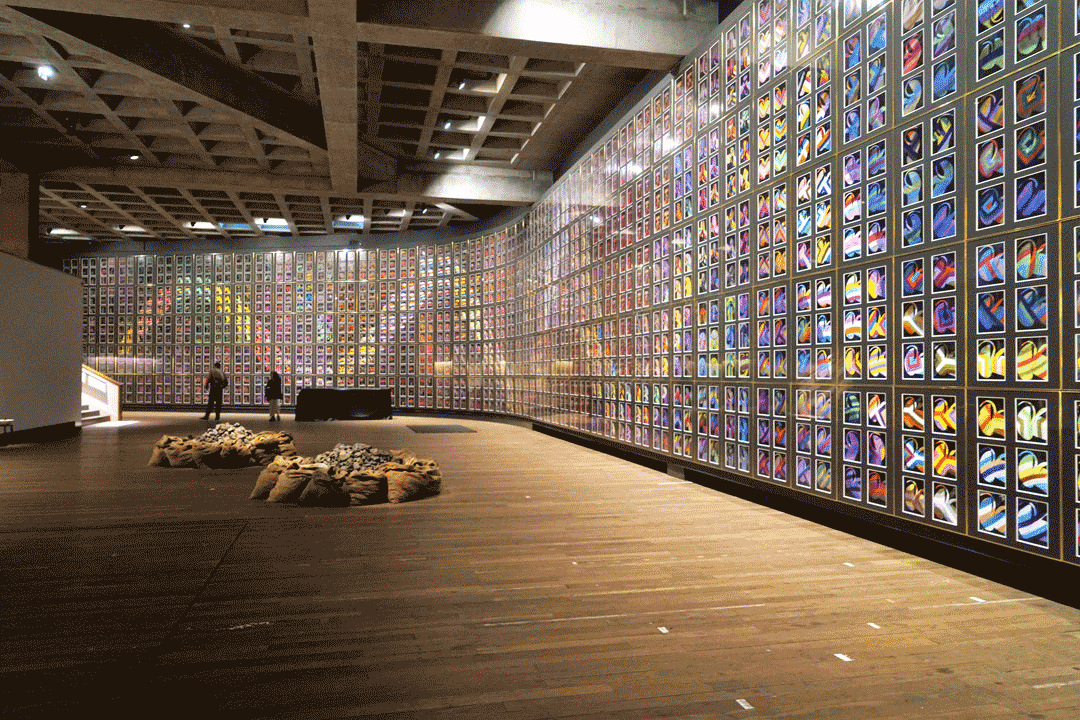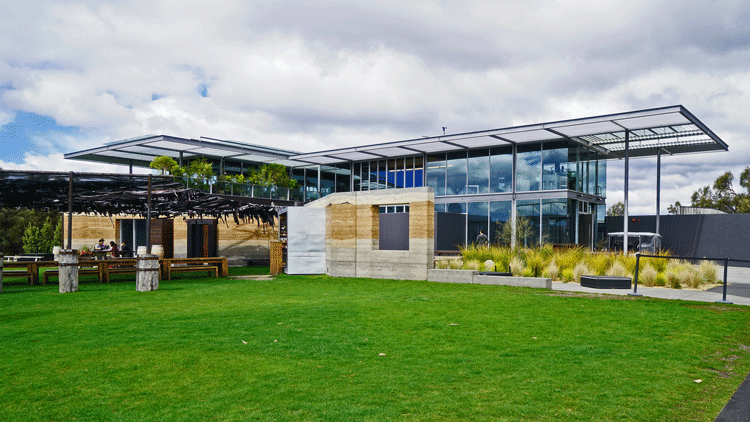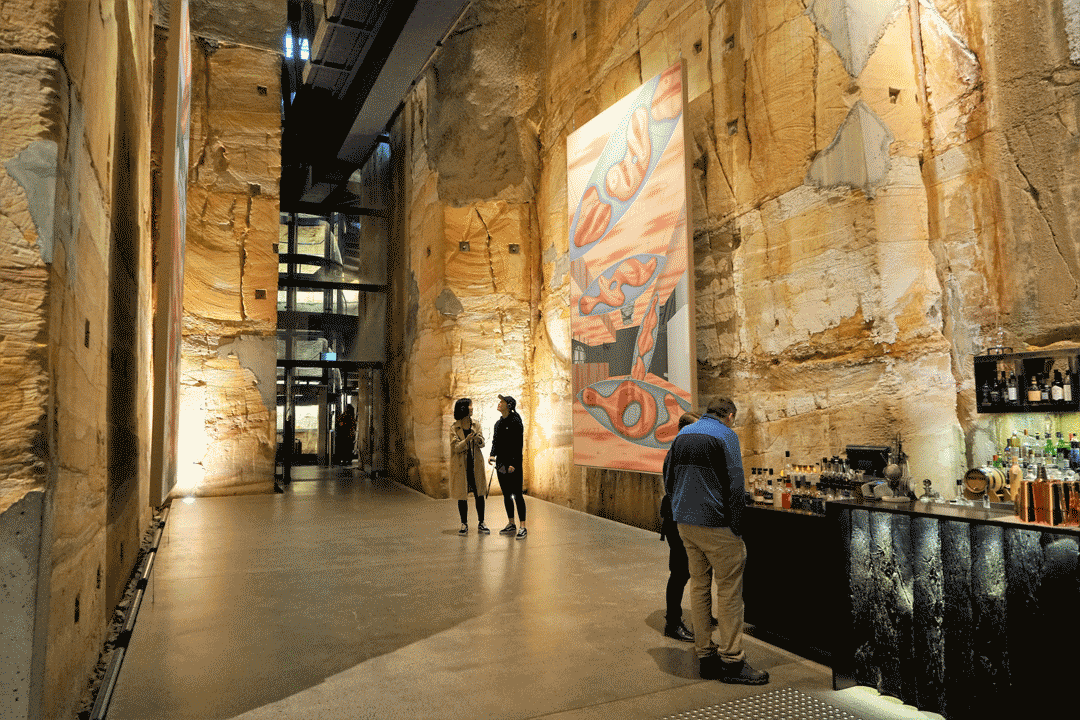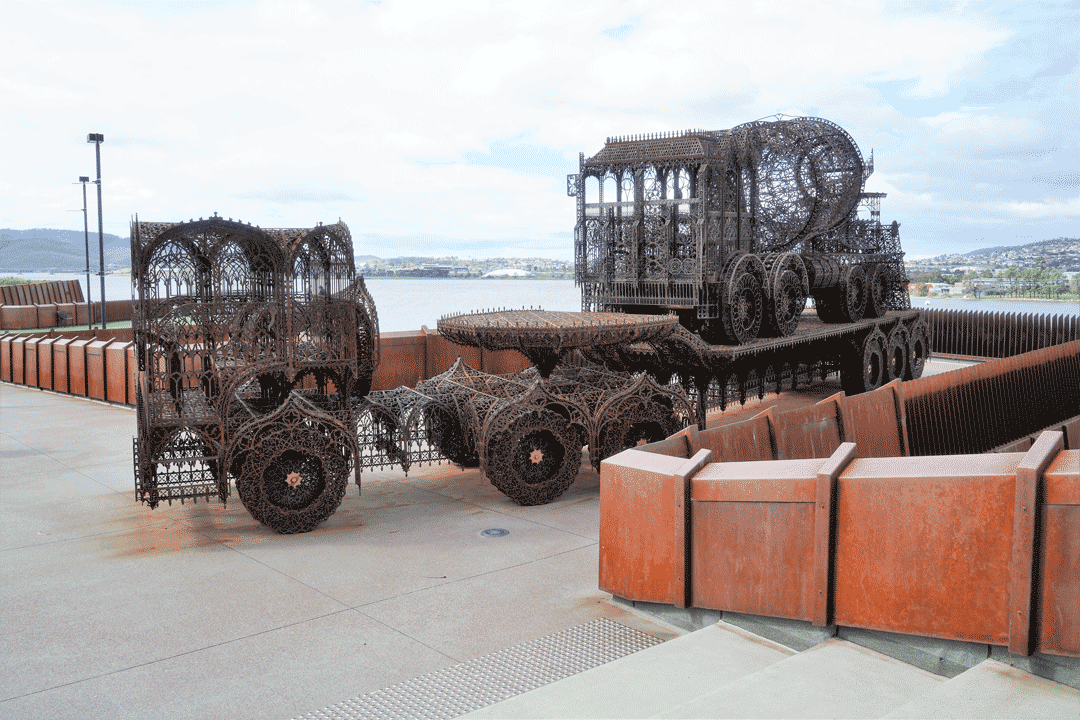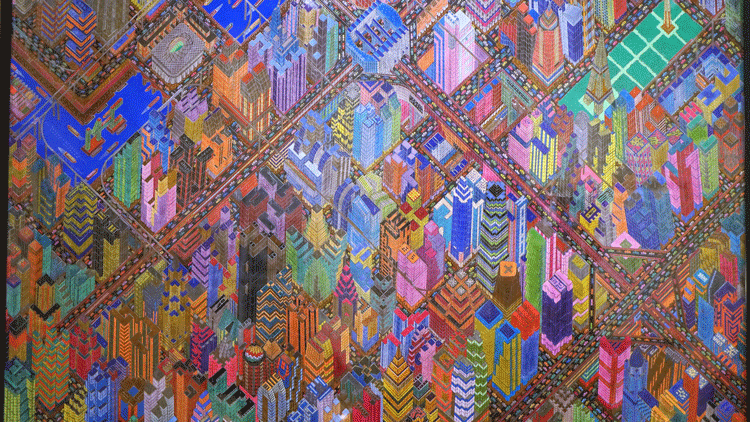
Theory: When we discussed the buyer decision process we stated that within every consumption activity there are qualities – following convention we labelled these as consumption qualities. Qualities are the elements, features, properties, characteristics of a product and that if you removed all the qualities you remove the product.
We discussed total quality as the sum of all qualities both positive and negative that a customer perceives, receives, and evaluates in an exchange. Building on the literature and our activities we listed 8 qualities and highlighted the relationship between qualities and risks. They are functional, social, epistemic, emotional temporal, physical, spiritual, sensory qualities/risks. As we progressed we discovered that the 8 qualities could also be categorised from an organisational perspective as functional, technical, relational, and place qualities.
We discussed the relationship between expectations and evaluations of quality, value, and satisfaction and their role of each in achieving a competitive advantage.
It is with the theory in mind that the following scenarios are discussed.
.
Expectations influence evaluations
Hilton double tree – Westminster
Our time in London was quickly coming to an end; we were booked on the Saturday afternoon train to Glasgow [Scotland]. Just enough time to catch up with my brother [who lives in England] in a London Cafe. Then it was a quick dash to the Hilton, Double Tree, to collect our bags, pay the bill, catch a cab to Euston Station, and then board the train to Glasgow.
The train trip from London to Glasgow is extremely enjoyable; staring out the widow at a green and stone walled landscape, past factories and towns, watching trucks and cars on the roads and highways, observing people getting on and off the train or just waiting on the platforms waiting for another train. Even simple things like getting a cup of tea from the buffet car are enjoyable.
My mind wandered and I started to reflect on our stay at the Hilton Double Tree in Westminster.
Customer expectations and interactions with staff are a key influence on evaluations of customer satisfaction. Before selecting this hotel I reviewed a number of sites and although my first preference was fully booked I booked my second preference with the anticipation of a satisfying experience. My main source of reference was the Double Tree website.
The hotel was very conveniently located, the area quiet by London standards, the rooms were functional in design, the rooms were clean, the staff on the front desk were efficient during check in and check out. Because of those factors I would probably recommend it to friends and I would probably stay there again if it suited the purpose of my visit.
Now it has to be recognised that most guests would stay at this hotel for business; therefore, technical qualities [what is delivered] would be given a higher priority than functional qualities [how it is delivered].Whilst the technical qualities were to expectations, the functional qualities at the Double Tree were less than expected.
A product has 6 product components and the service, people, and experience components of the Double tree product were very poor. Unbelievably, during our five days only one staff member acknowledged us, and, consequently, we didn’t go out of our way to initiate conversation. The positioning of their reception desk is such that you never had to come in contact with a staff member when entering or leaving the hotel. There were other indicators that quality service and the customer experience were not given priority, perhaps, I am being overly pernickety, but to me courtesy and manners are important.
Incredulously, on several occasions staff entered and exited the elevators without any acknowledgement or social courtesy to the hotel guests – but worse still – on occasions purposefully maneuvered to exit the elevator door before a guest. Where were their manners? We were not the only ones to frown on this behaviour; the body language of other guests indicated that they also found this behaviour – disconcerting.
What we see in the Double Tree scenario is where pre-purchase expectations are not delivered.
Let’s look at the bigger picture – the root cause – I was a tourist in a hotel that primarily catered for business travellers. Nevertheless, there were a number of positive qualities and during the evaluation process [calculations of positive and negative qualities] an overall positive evaluation was achieved. Marketing practitioners should ensure:
- that their communication does not attract the wrong market segment.
- if appealing to more than one segment then understand the needs of the segments and implement an internal marketing programme to improve the customer experience, customer satisfaction, and loyal behaviour.
One last comment regarding relationship qualities: this organisation frequently send emails – and I guess they expect some outcome from this all this email effort. Generally, I am an advocate of email promotions. However, in this case this tactic annoyed me; because when I was a guest in their hotel and they had a chance to an create an experience, increase guest satisfaction, and build loyal behaviour – they elected to ignore me and didn’t practice the normal civilities that one would expect in the hospitality industry. Be there for your customers.
Attribution of blame
I visited Tasmania for a vacation [a holiday not work]. As a keen photographer I was keen to take photographs of Tasmania, particularly Cradle Mountain – a photograph that I had always wanted to take. When we visited Cradle Mountain it was extremely cold, windy, raining heavily, and therefore there was little visibility – Cradle Mountain was lost in the mist. I waited for some time, in the hope that there would be a break in the weather but unfortunately the conditions were bleak. I did, however, sneak a few shots of the boathouse at Dove Lake [see below].
The point is that when there are factors beyond our control [or the control of others] then we tend to consider the factors when evaluating the consumption experience. Although it was not the outcome I had hoped for misty weather in Tasmania is not totally unexpected.
Also when we evaluate the aggregate product we evaluate the total experience and multiple total products. Our evaluations can be a mix of evaluations.
Many years ago, I had a line manager who philosophically stated ‘control the controllables and manage the rest’.
Still in Tasmania, I went to MONA [Museum of Old and New Art] just outside Hobart. Just about everyone that I know raved about MONA. Their praise was such that I believe that my expectations were heightened beyond what MONA could possibly deliver. At a dinner party one friend, who had previously gushed at length after a visit to MONA, asked me what I thought, and I said that I was rather disappointed. And, mentioned that when traveling around Tasmania, we met a number of other disappointed visitors – one couple stated that they caught the ferry and were therefore ‘held prisoner until the next ferry’ – another questioned whether it was to ‘take the piss out of people from the rest of Australia’. Our gushing friend then stated that she had consumed a fair few alcoholic drinks prior to visiting, and, on reflection, was probably in a MONA mood. Another friend stated that he loved the building [and it is a really interesting building], but, the exhibits were not quite his taste – he stated that ‘as the father of two daughters … some were vulgar and hardly reflecting modern values’.
Expectations are created from word of mouth and previous experiences. Over the years I have visited a number of cities and I have visited a number of modern art museums, therefore, when people raved about MONA I believe that my previous experiences created an expectation benchmark and I perceived the exhibits would be of a much higher standard.
I have no doubt that if I had simply stumbled upon MONA without any preconceived expectations or previous experiences I may have left with an entirely different perspective.
The following are a few photographs taken at MONA .
I am no art critic, however, the lesson for marketing practitioners is to be mindful not to heighted expectations in external communications.
Tasks
Reflect on your own experiences and consider how expectations formed in the 1st time-zone of the buyer decision process influence evaluations of satisfaction in the 3rd time-zone.
Read attribution of blame theory and reflect on an incident where you attributed blame to more than one person/organisation or activity.
